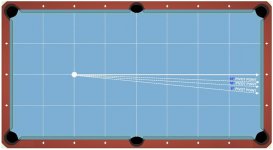podsbilliards
Registered
Hi All, I'm in the market for a carbon fiber shaft and was wondering what the pivot points are on all the different brands available. Dr. Dave did a video on pivot points a while back that included a Revo (not sure if it was the 12.4 or 12.9 or if it matters) and the Cuetec Cynergy. Attached is the video of how to measure the pivot point. The Revo that he tested was 19" and the Cuetec was 13". Any feedback would be greatly appreciated. Thanks.
https://billiards.colostate.edu/faq/cue/natural-pivot-length/
https://billiards.colostate.edu/faq/cue/natural-pivot-length/

